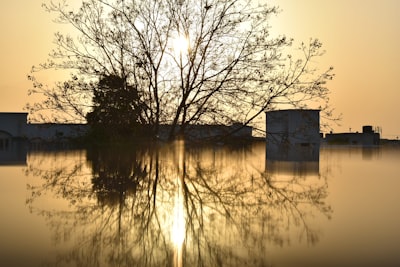What the Texas Floods Teach Us About Flash Flood Dangers and Preparedness
The devastating flash floods in Central Texas in July 2025—claiming over 80 lives and leaving dozens missing—have cast a national spotlight on flood safety, disaster preparedness, and the urgent need for community resilience in the face of extreme weather. As rescue and recovery continue, questions arise: How can we better predict flash floods? What are the best ways to prepare for severe weather emergencies? And what can communities do to recover after such tragedy?
Flash Floods in Texas: Why Are They So Dangerous?
Texas is no stranger to extreme weather, but the recent Kerr County catastrophe highlights the lethal speed and unpredictability of flash floods, especially near rivers like the Guadalupe. Rapid rainfall, like the kind that saw river levels rise 26 feet in just 45 minutes, leaves little time for evacuation or warning.
Why are flash floods in Texas particularly deadly?
- Geography: Many Texas communities sit near rivers, creeks, and low-lying areas.
- Weather patterns: Sudden, intense rainfall is common, especially in summer.
- Infrastructure: Rural roads and campgrounds often lack advanced warning systems or high ground for rapid escape.
- Population: Popular events—such as July 4th celebrations or summer camps—can mean more people are at risk.
How Early Warnings and Emergency Alerts Work
Dozens of residents have questioned the effectiveness of early flood warnings. While Texas employs weather radios, mobile alerts, and sirens, flash floods often outpace human and technological response.
Common search queries:
- How do flash flood warnings work?
- Can you get reliable alerts during severe storms?
- Best flood warning apps for Texans?
Building a Family Flood Emergency Plan
Preparation saves lives. Having a family emergency plan is crucial, especially for those living near water. Key steps include:
- Know your area’s flood risks (FEMA Flood Map)
- Sign up for local weather alerts
- Identify multiple evacuation routes
- Prepare an emergency kit with water, food, clothing, flashlights, and important documents
- Discuss plans with all household members
Recovery and Community Support After Natural Disasters
In the aftermath, community recovery is as critical as rescue. Local volunteers, faith-based organizations, and disaster relief agencies like FEMA offer food, shelters, and clean-up help. Mental health support is increasingly recognized as necessary for survivors and rescuers alike.
Helpful resources:
Climate Change and the Rising Frequency of Extreme Weather
Many ask, "Why are floods getting worse?" Scientists point to climate change: warmer air holds more moisture, increasing the chance of heavy rain. Texas is likely to see more frequent and intense flooding in the coming years.
Related questions:
- How does climate change affect Texas weather?
- What can be done to make communities more flood-resilient?
- Are there new technologies for real-time flood monitoring?
FAQ: Texas Flash Floods and Safety
Q: What should I do during a flash flood? A: Move to higher ground immediately. Do not attempt to drive or walk through floodwaters.
Q: Where can I find real-time flood alerts? A: The National Weather Service (NWS) and weather alert apps provide up-to-date warnings.
Q: How can I help flood victims? A: Donate to reputable charities, participate in local relief efforts, or offer supplies if you’re nearby.
The tragedy in Kerr County reminds us that flash flood dangers are real and growing in Texas. But with education, preparedness, and stronger community networks, future disasters may not claim as many lives—or devastate as many families. Stay alert, stay prepared, and check in on your neighbors when severe weather looms.

Comments
No comments yet. Be the first to comment!